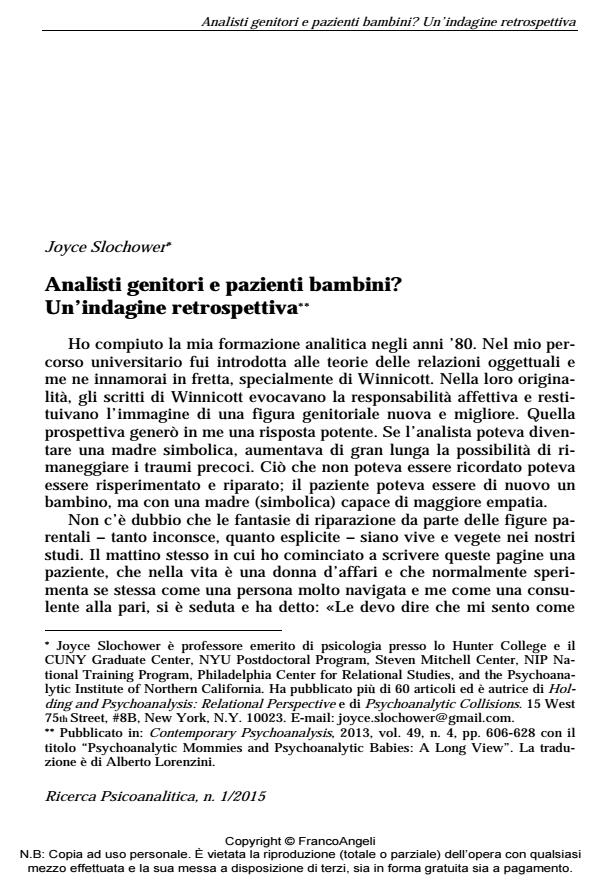Analisti genitori e pazienti bambini? Un’indagine retrospettiva
Titolo Rivista RICERCA PSICOANALITICA
Autori/Curatori Joyce Slochower
Anno di pubblicazione 2015 Fascicolo 2015/1
Lingua Italiano Numero pagine 24 P. 9-32 Dimensione file 127 KB
DOI 10.3280/RPR2015-001002
Il DOI è il codice a barre della proprietà intellettuale: per saperne di più
clicca qui
Qui sotto puoi vedere in anteprima la prima pagina di questo articolo.
Se questo articolo ti interessa, lo puoi acquistare (e scaricare in formato pdf) seguendo le facili indicazioni per acquistare il download credit. Acquista Download Credits per scaricare questo Articolo in formato PDF

FrancoAngeli è membro della Publishers International Linking Association, Inc (PILA)associazione indipendente e non profit per facilitare (attraverso i servizi tecnologici implementati da CrossRef.org) l’accesso degli studiosi ai contenuti digitali nelle pubblicazioni professionali e scientifiche
L’articolo presenta una rassegna retrospettiva dell’uso della metafora dello sviluppo infantile nel pensiero relazionale. Le prime critiche relazionali al modello del deragliamento evolutivo e l’accanimento delle autrici femministe contro il concetto di holding nel lavoro clinico spinsero i relazionali verso una raffigurazione del paziente come necessariamente adulto e del dialogo analitico come intersoggettivo per definizione. Nella mia prospettiva winnicottiana/relazionale ho ampliato il concetto di holding e ho proposto delle mediazioni che rendessero possibile la coesistenza fra holding e pensiero relazionale, esplorando in che modo la partecipazione dell’analista renda possibile l’esperienza dell’holding. Nel passare in rassegna e aggiornare i termini della polemica, l’autrice offre nuove idee sulla funzione clinica dell’holding nel tamponare il senso di vergogna.
Parole chiave:Deragliamento evolutivo, Winnicott, teoria relazionale, holding, intersoggettività, il paziente come bambino
Joyce Slochower, Analisti genitori e pazienti bambini? Un’indagine retrospettiva in "RICERCA PSICOANALITICA" 1/2015, pp 9-32, DOI: 10.3280/RPR2015-001002